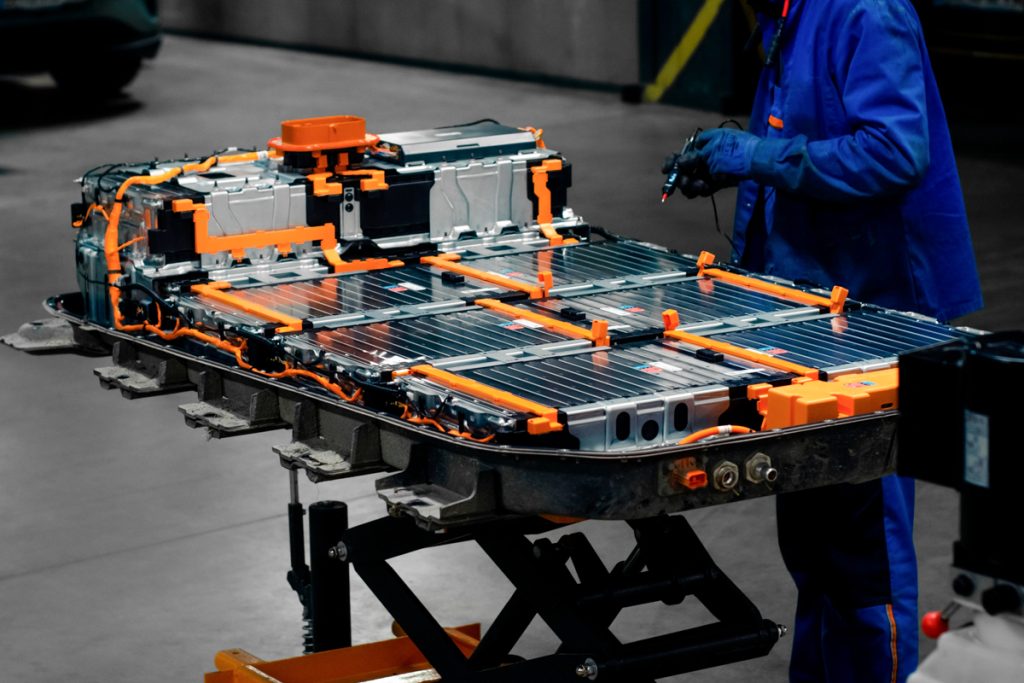
Nickel’s Role in EV Battery Technology
Nickel plays a critical role in modern electric vehicles (EVs), particularly in lithium-ion batteries that employ nickel-manganese-cobalt (NMC) and nickel-cobalt-aluminum (NCA) compositions. Availability of nickel-rich cathodes plays a critical role in achieving higher energy density, leading to increased driving ranges and better electric vehicle drivability.
In battery cells, nickel is significant in optimization of the energy storage and release capabilities of a cathode so that it affects a car’s range of operations as well as charging effectiveness. Compared to earlier lithium-ion batteries that heavily relied on cobalt or manganese, nickel-rich configurations offer larger-capacity per kilogram so that they particularly complement high-end electric cars.
Notable also is that companies like Tesla, General Motors, and Volkswagen both heavily rely on NCA and NMC chemistries for their ultra-premium offerings, for which battery energy density and driving range matter most.
Advantages of Nickel-Rich Batteries
Batteries with higher levels of nickel provide many advantages that align with industry objectives and consumer demand:
- Greater energy density: A higher percentage of nickel in the cathode produces a larger amount of energy storable per mass unit, thus prolonging time between charging cycles.
- Lower reliance on cobalt: Cobalt is expensive and geopolitically sensitive. Nickel-rich chemistries reduce cobalt use, helping control costs and mitigate ethical sourcing concerns
- Improved thermal stability: High-nickel batteries show good thermal characteristics, hence with good engineering practices, they realize faster charging rates.
Their corresponding benefits encourage a move away from common chemistries like lithium iron phosphate (LFP) inperformance vehicles. Tesla’s long-range and performance cars, for instance, mostly use nickel cobalt aluminum (NCA) or nickel manganese cobalt (NMC) batteries with higher concentrations of nickel, depending upon that particular production facility and model iteration, while less-cost-focused models might be fitted with LFP.
Global Nickel Supply and Demand Dynamics
Due to rising demand for electric vehicles, nickel has become a critical commodity. Production of battery-grade nickel (class 1) is mainly done by:
- Indonesia has become a top producer of nickel internationally with prominent investments in refining technologies along with high-pressure acid leach (HPAL) technology.
- The Philippines and Russia represent critical supply sources; geopolitical tensions have affected trading conditions.
- Australia and Canada – key players in supplying Class 1 nickel with strong ESG credentials.
According to the IEA, nickel demand from the EV sector is expected to grow by 2.5 to 3.5 times by 2030. This surge is reshaping global supply chains and encouraging new investment in refining capacity — particularly in North America and Europe, which aim to secure local sources for clean energy materials.
Environmental and Ethical Considerations
The rapid escalation of nickel mining operations creates critical environmental and moral concerns. Major concerns include:
- Deforestation and habitat destruction, especially in tropical regions like Indonesia.
- Water and soil contamination from tailings and acid leaching.
- Labour rights violations and uncertainty about artisanal mining activities.
To address these issues, companies and governments are turning to:
- Sustainability-focused efforts range from the Initiative for Responsible Mining Assurance (IRMA) to Fairmined.
- Recycling of nickel containing batteries is estimated to supply about 20% of forecasted demand up to 2040.
- Technological improvements in extraction and refining, aimed at reducing emissions and waste.
Consumer awareness and regulatory pressure are pushing automakers to disclose supply chain practices, making sustainability a growing part of the nickel equation.
Foreseen Prospects for Nickel in Electric Vehicles Industry
Nickel’s role in the EV market is expected to intensify over the next decade. Battery makers are experimenting with:
- High nickel content cathodes like NMC 811 with 80% nickel content deliver higher energy density.
- Solid state batteries promise increased safety along with larger range while still using nickel.
- Recycling technologies embrace, for example, hydrometallurgical extraction of nickel from discarded batteries.
However, some automakers are also hedging against nickel volatility. BYD and Tesla, for example, are expanding their use of LFP batteries in lower-cost models due to their simpler supply chain and durability, though these chemistries typically have lower energy density.
In short, while nickel remains critical in long-range electric vehicles development, the industry is increasingly moving toward multi-chemistry technologies that harmonize economics with performance and sustainability.
FAQ
Is nickel used in cars?
Nickel is greatly applied in electric vehicles as a critical component in lithium-ion battery cathodes. Its use allows for increased energy density, hence a long range for long-haul travel. Its use also includes parts made from stainless steel along with many other structure components.
Does Tesla use nickel?
Tesla uses nickel-rich batteries, more precisely NCA (nickel-cobalt-aluminum) cells, in Model X and Model S, also in Model 3 and Model Y’s extended-range configurations. To achieve its rapid development, Tesla has been actively pursuing alternative supplies of nickel.
Which cars use nickel batteries?
Most premium electric vehicles use nickel-based lithium-ion batteries. These include:
- Tesla (NCA/NMC)
- BMW i4, iX (NMC)
- Volkswagen ID.4 and Audi e-tron (NMC)
- Ford Mustang Mach-E (NMC)
Budget models may use LFP batteries, which do not contain nickel.
Did Nio lose $35,000 per car?
In early 2024, reports suggested that Nio faced losses of up to $35,000 per vehicle, though later estimates placed the figure closer to $11,000–$15,000, reflecting material costs, R&D, and inefficiencies. Nickel pricing and supply constraints were among the contributing factors.
Leave a Reply